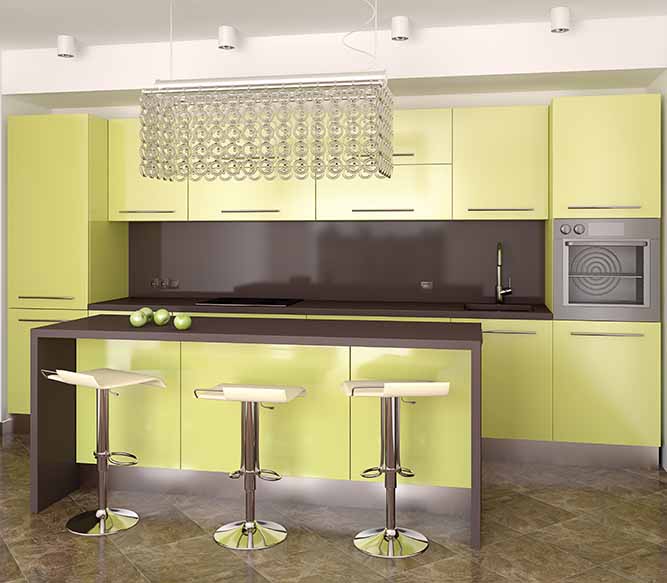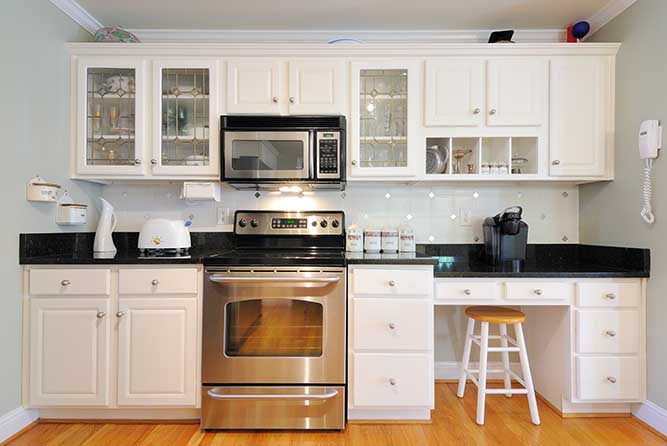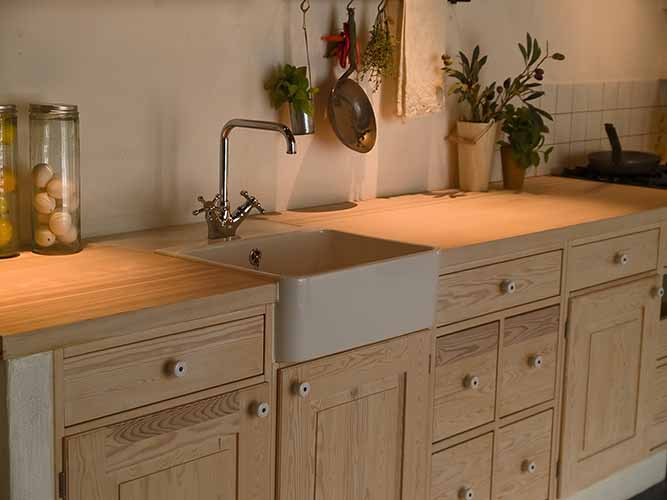Cabinet Construction Types
Learning about the common types of cabinet construction is incredibly helpful when considering what cabinet boxes would be best for your household. This is because each cabinet type can be very different in terms of how they will look on your wall, how much they will cost you, and even how hard they are to install, so learning the differences between cabinet construction types can make a big difference in how you make your decision. After all, the cabinets you end up choosing are likely to stay with you for a while, so it’s a good idea to arm yourself with the right knowledge and find the best match for your personal cabinet needs.
Framed Cabinets
Framed cabinets feature a six-sided box design that earn their name from the frames positioned on the front of their boxes. This kind of cabinet is the most commonly seen model in the United States, and is notable for how it attaches doors directly into its frame with either hinges, or an inset construction.
There are three different sub-types of framed cabinets to consider, each determined by the style of door placement.
Full-OverlayThe door of a full-overlay cabinet is hinged to the frame so that it overlaps the front of the box entirely, leaving none of the frame visible. In cabinet systems of multiple boxes, this forms an even aesthetic by creating one level surface between each connected box. |
Partial OverlayPartial-overlay cabinets also have doors hinged to their frames, though as the name suggests, the doors do not cover the frames in their entirety. Instead, there are sunken spaces of frame left visible between the doors and drawers of the cabinet boxes. Of the three framed cabinet construction types, this is the most popularly used, and usually least inexpensive. |
InsetAn inset cabinet will leave its entire frame visible by insetting a door so that the door aligns flush to the frame of its cabinet box. Similar to the full-overlay design, inset cabinets create an impression of one continuous surface across the boxes of a cabinet system. This construction type embodies a more refined, period inspired style, but requires greater craftsmanship and is therefore the most costly of the framed cabinet types. |
Frame-Less Cabinets
Also called full-access cabinetry, and known for their traditionally widespread use in Europe, frame-less cabinets present a five-sided design that holds no frame, and has its doors hinged directly onto the cabinet box. The walls of these models are usually constructed to be denser than those of their framed cabinet counterparts to provide added support in lieu of a frame. Since the hinges must be mounted to the sides of the box, frame-less cabinets are limited to full-overlay door designs.
Ready-To-Assemble Cabinets
Excellently suited for Do-It-Yourselfers, ready-to-assemble cabinets are not named after their appearance, and can come in both framed and frame-less varieties. Rather, this type of cabinet is defined by its need for assembly after purchase and delivery. The required hardware and components for each cabinet’s construction are included with delivery, and assembly and installation usually takes a few hours. Once finished, a ready-to-assemble cabinet can be just as sturdy, attractive, and long-lasting as any pre-assembled model. Since construction labor is completed by the buyer at home, ready-to-assemble cabinets generally come at a lower cost than pre-assembled models.
 MADE IN THE USA
MADE IN THE USA






